- The rain-shadow regions of North America’s Pacific Northwest, stretching from British Columbia to Oregon, are home to a unique carbon-rich oak-prairie ecosystem dominated by Garry oaks and several species of grasses and shrubs, including endemic plants.
- The ecosystem also holds a special significance in the way of life for the Indigenous peoples in the region, who have stewarded it for millennia and depended on it for food.
- In the past few centuries, however, rapid urbanization, agricultural expansion, development along the coast and proliferation of invasive plants have destroyed more than 95% of the ecosystem, pushing it toward near-extinction.
- Communities, partnering with different national and regional agencies, First Nations and nonprofits, are working to restore and preserve the remnants using various strategies, many of which have borne fruit.
On the eastern edge of Victoria, British Columbia, abutting the Salish Sea, sits Uplands Park, spanning about 30 hectares, or 74 acres, amid the bustling municipality of Oak Bay. Although an urban park, it lacks manicured lawns, ornamental flowers or asphalted walkways — quintessential elements of modern-day urban parks.
Instead, the landscape is sprinkled with stunted, gnarled and crooked oak trees. A few shrubs of snowberry (Symphoricarpos albus) and ocean spray (Holodiscus discolor), and some Douglas fir (Pseudotsuga menziesii) and arbutus (Arbutus menziesii) are in the mix too. A Meadows of grasses and wildflowers blanket the understory. In the dry summer months, everything is brownish, but come spring, the meadow comes alive with colors: wildflowers in the park bloom, painting it hues of lilac, yellow, white and purple.
About three decades ago, when Margaret Lidkea first saw this patch of green space, it was vastly different.
“Pretty much every meadow was full of Scotch broom woodlands,” says Lidkea, a former high school biology teacher. “You couldn’t … go in there without crashing into all that.” Scotch broom (Cytisus scoparius) is a non-native shrub. Pointing to her Zoom background — an image of one of the vernal pools in the park filled with lilac camas flowers (Camassia spp.) — she says, “that was just a solid forest of Scotch broom.”
Having grown up in Victoria, Lidkea recognized the value of the rare Garry oak (Quercus garryana) ecosystem in Uplands Park, even if others couldn’t see it. Stretching from southern Vancouver Island all the way down to southern California, the Garry oak ecosystem is an oak-prairie landscape characterized by a mosaic of woodlands dotted with Garry oaks, also called the Oregon white oak in the U.S., and stands of Douglas fir and arbutus, or Pacific madrone, paired with meadows, grasslands and open rocky areas.
In recent years, urbanization, agricultural expansion and development on the coast have decimated this ecosystem; today, less than 5% remains as fragmented patches. That makes the Garry oak ecosystem one of the most endangered ecosystems in North America.
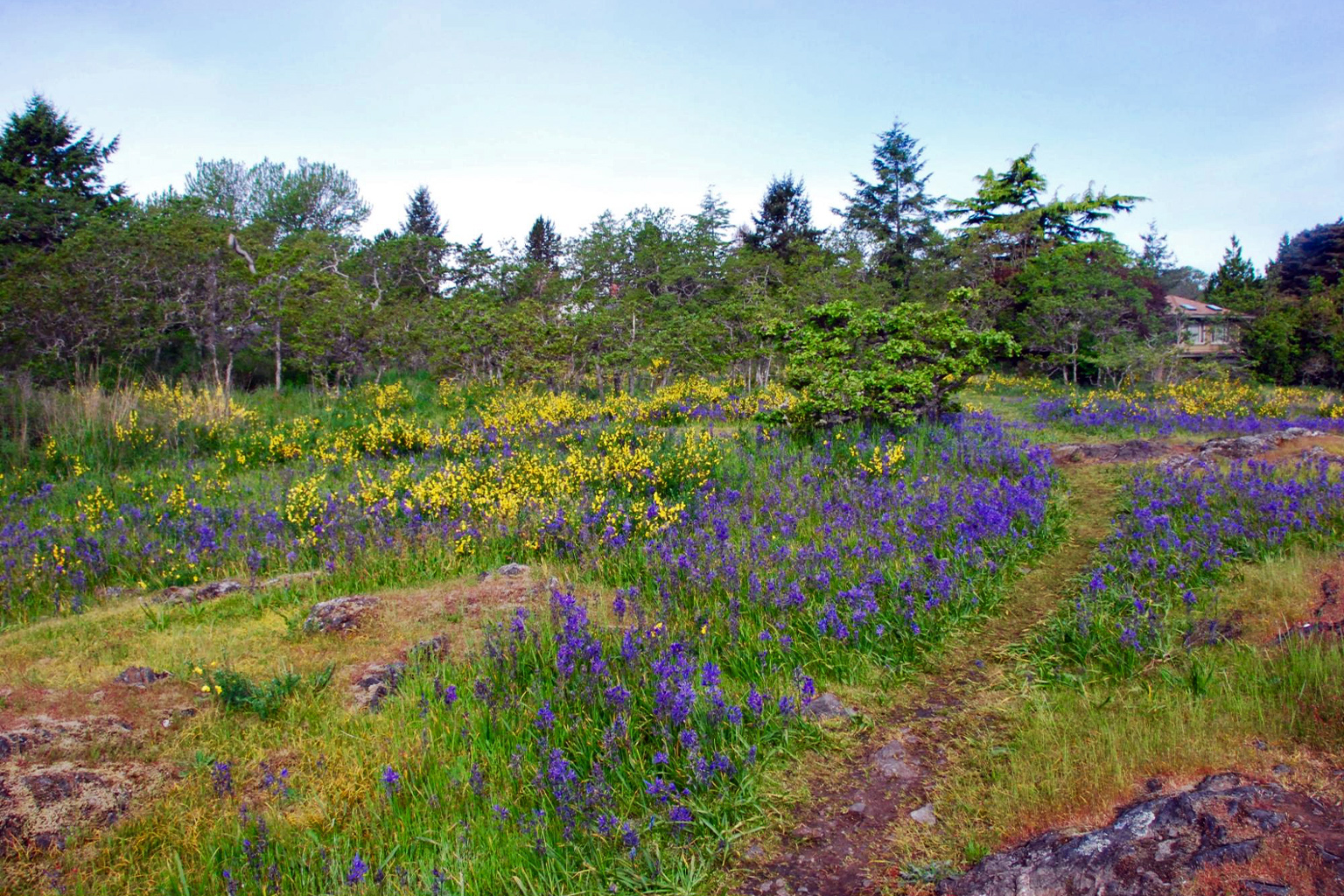
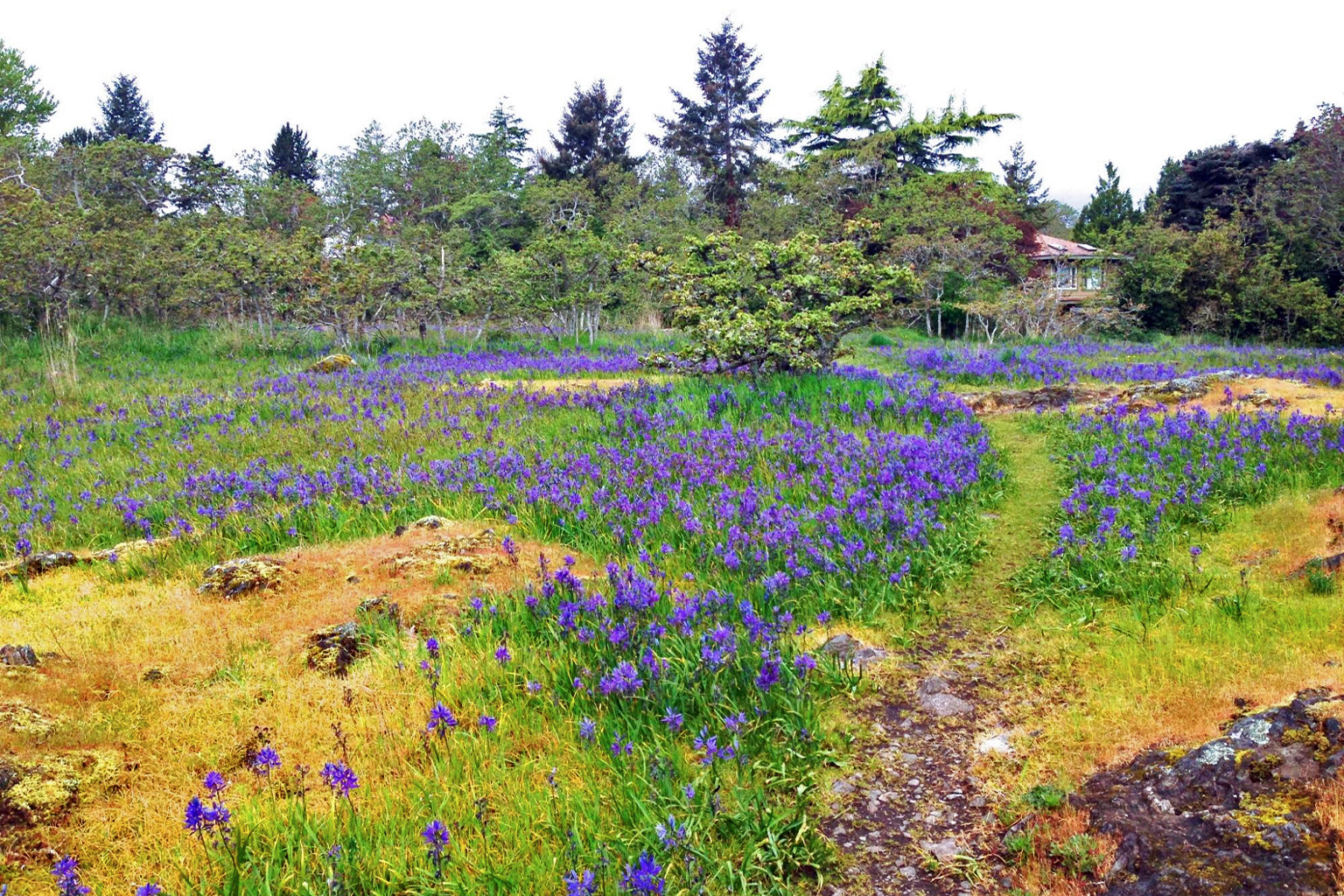
Restoration of a nearly extinct ecosystem
In 1992, when Lidkea worked at Swan Lake Nature Sanctuary, she brought some Girl Guides to the park and they began cutting down Scotch broom shrubs and other invasive plant species.
“People back then didn’t have a clue what I was doing and they would get really angry that I was ruining nature,” she says. But she and her volunteers persevered. “Now, people walk by and say thank you for your sacred work.”
In 2007, Lidkea co-founded the Friends of Uplands Park Society (FOUPS), a volunteer-driven initiative aimed at protecting and educating people about the local ecosystem. Wylie Thomas, a botany enthusiast passionate about Garry oaks, joined FOUPS in 2014, and the duo designed a full restoration plan: they sliced the park into different polygons and focused their efforts on each section, working with volunteers.
Over the next few years, volunteers removed invasive shrubs and grasses, replanted native species, put up signs for people to stay on trails, and educated the community about the uniqueness of this ecosystem they live among.
The efforts paid off. After removing English ivy (Hedera helix) from one of the sections, the volunteers noticed fawn lilies (Erythronium oregonum) bloom the next spring for the first time in years. Other wildflowers, including the blue camas (Camassia quamash) followed suit. Instead of the Scotch brooms, oak trees stood out in the landscape. Today, Uplands Park harbors 26 species of native plants, of which 16 are designated as species at risk by the Canadian government. Some of these have bounced back in numbers.
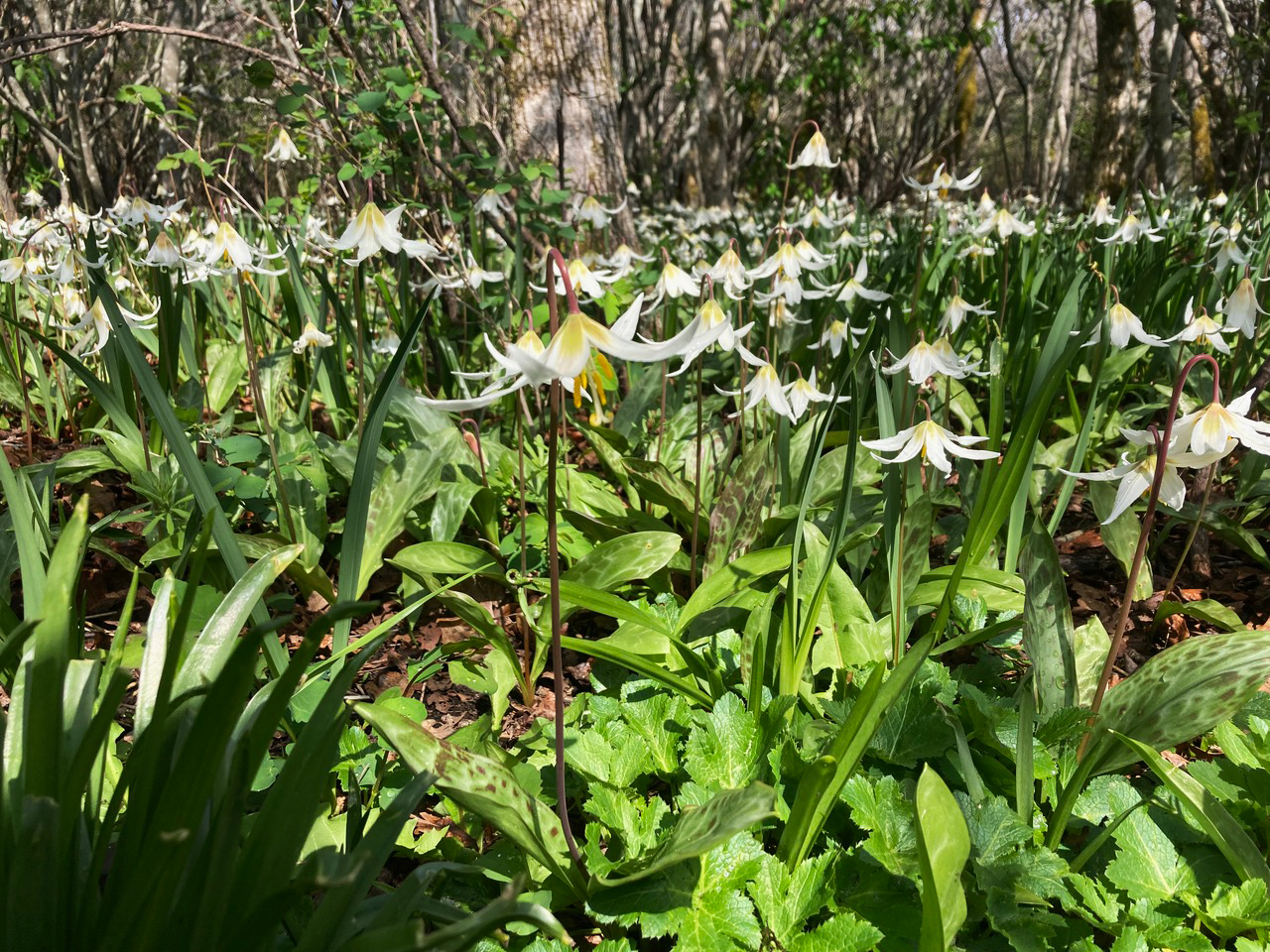
Yellow montane violet (Viola praemorsa), a species that experienced the greatest decline between 1960 and 1990 is on the B.C. provincial government’s red list, which means it’s at risk of being lost there. In 2016, only 37 plants were found in the park, but by 2021 that number had shot up to 290. White-top aster (Sericocarpus rigidus), which is on B.C.’s blue list (a species of special concern), quadrupled in number from 2,141 flowering plants in 2016 to 9,901 in 2020 in the park. Water-plantain buttercup (Ranunculus alismifolius), an endangered species nationally that was once was found in five locations across the park, is now found in 15, with the number of plants tripling. Purple sanicle (Sanicula bipinnatifida), also on the red list, increased from 427 plants in 2015 to 628 in 2022.
With the return of the flowers came the critters.
“The insect population and diversity has increased incredibly, as have the birds,” Lidkea says, and the park is now a birding hotspot.
Every Sunday, the park hosts a community event, and every year, during spring, it celebrates Camas Day, when the violet flowers come into bloom. The park is also in the process of being designated as a Key Biodiversity Area, with the announcement expected in a few months.
“It’s nice to be put on the map,” Thomas says, adding that a KBA declaration would add evidence to “how important this place is.”
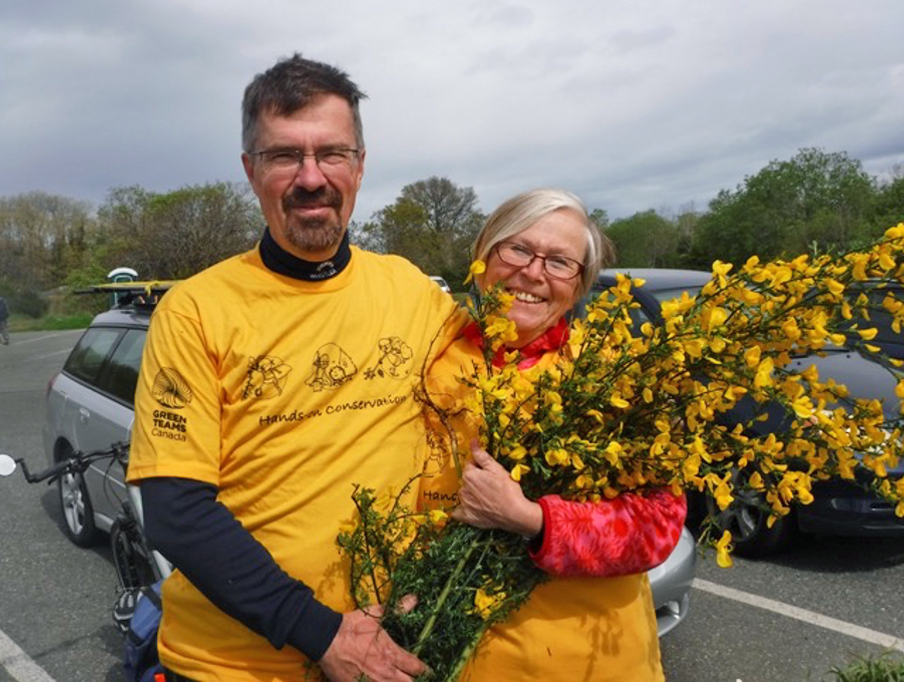
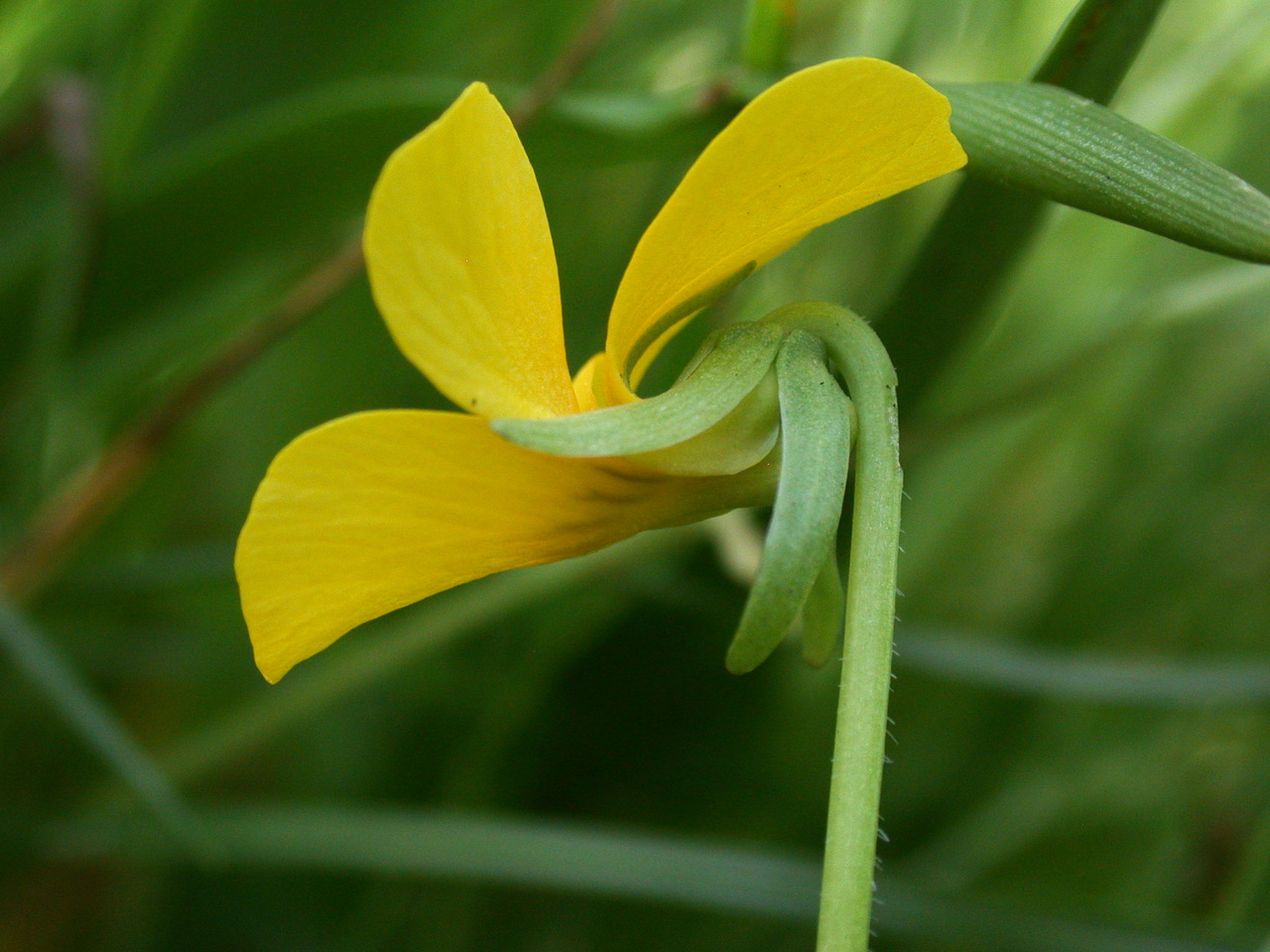
Endangered ecosystem that once stood the test of time
With nearly 700 species, subspecies and varieties of plants identified in Garry oak ecosystems, the habitat harbors more plant species than any other land-based ecosystems in coastal British Columbia. Many of the species found here occur at the northern limits of their range, and some are found nowhere else. “I think the number one reason these systems are important for us in Canada is biodiversity,” says ecosystem scientist Marlow Pellatt from Parks Canada, the federal agency that manages most of Canada’s protected areas.
Historically, about 10,000 to 7,500 years ago, the climate in the Pacific Northwest was conducive to oaks as it was about 2° Celsius (3.6° Fahrenheit) warmer and drier than at present, and the oaks reigned in the Pacific Northwest. As the climate became wetter and cooler over the years, conifers like Douglas firs proliferated into the ecosystem and conquered most of it.
Yet, small pockets of Garry oaks remained in the rain-shadow areas, like parts of Vancouver Island, where winters are milder and drier and summers are cooler than other parts of British Columbia. Indigenous peoples also played a stewarding role in protecting these remnants.
“We have these Garry oak ecosystems because First Nations were using fire to promote the growth of camas, which was one of the [few] sources of starch in their diet,” says ecologist Ze’ev Gedalof from the University of Guelph, who has studied the role of fire in the ecosystem. The fires opened up the meadows for hunting and growing camas, and prevented the intrusion of conifers.
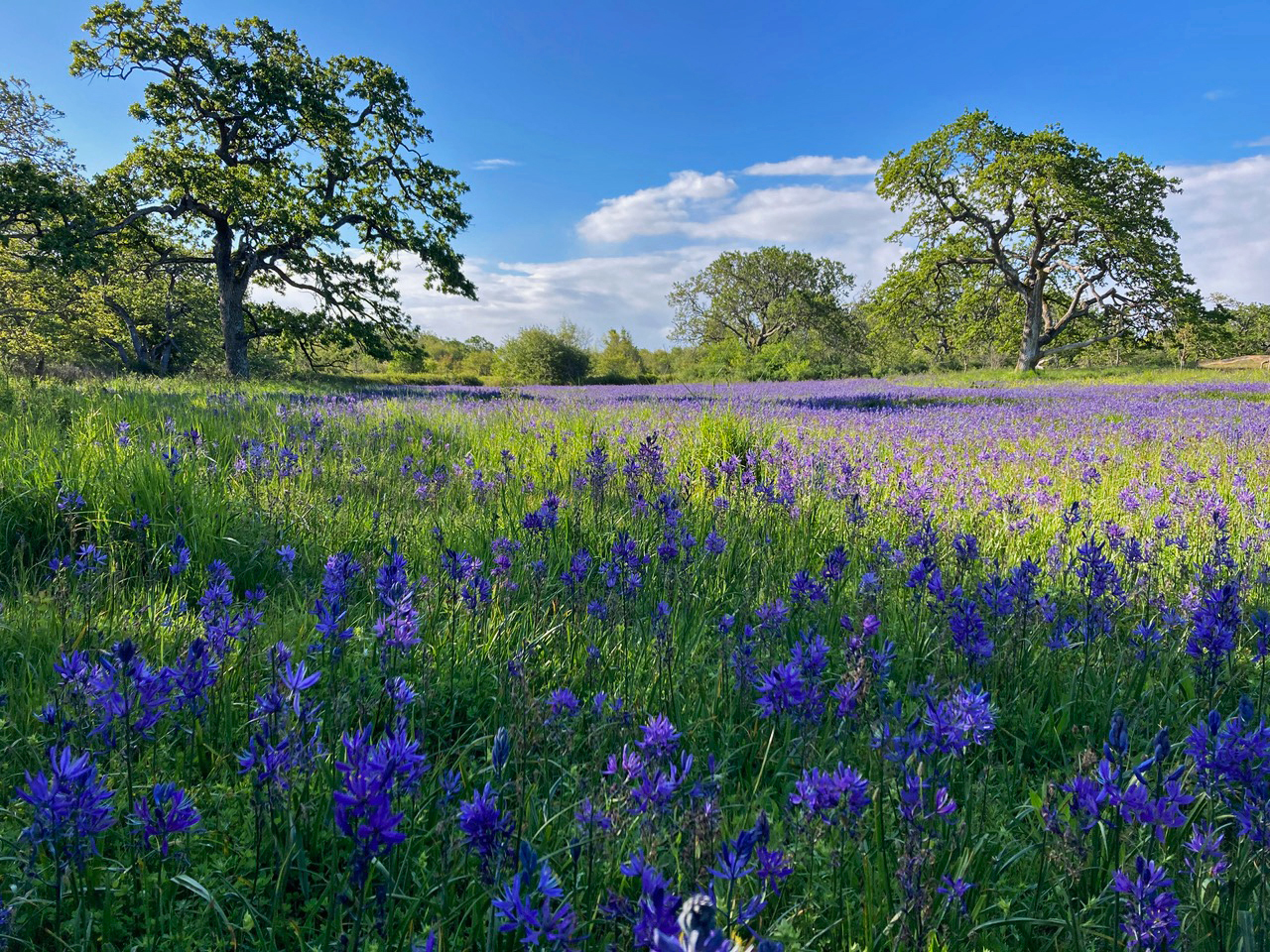
About two centuries ago, arriving European settlers they displaced the Indigenous people from their homelands in this region and introduced many invasive plant species. They also put a stop to the use of fire to manage the landscape. As a result, the unique Garry oak ecosystem began degrading and vanishing. In recent decades, as the city of Victoria ballooned and the need for land increased, 95% of the historical Garry oak meadows were wiped out, with no evidence of returning.
“We’re not seeing any sign that Garry oaks [have] been reproducing in the last 70 years,” Gedalof says. “There are tons and tons and tons of seedlings when we look through the understory, [but] they’re just not surviving.”
Experts have a few theories as to why this is: the loss of predators like wolves has allowed rodents like voles and mice to feast on the seedlings; invasive Eurasian grasses are sucking the moisture out of the ground, depriving the seedlings of water; or the absence of fire has let conifers dominate the ecosystem. But no one knows for sure.
Still, the loss of this valuable ecosystem has compelled environmental organizations, local communities and First Nations to mount restoration efforts over the past two decades in Canada and the U.S.

Restoration as a way for community involvement and reconciliation
Parks Canada focuses its Garry oak ecosystem restoration efforts at two sites spanning more than 50 hectares (124 acres). These efforts involve removing invasive plants, building fences to keep out native black-tailed deer (Odocoileus hemionus columbianus), managing the hyperabundant Canada geese (Branta canadensis) and starting a nursery to grow native plants. In recent years, these efforts have resulted in the recovery of rare plants plants like the slender popcornflower (Plagiobothrys tenellus), the endangered Macoun’s meadowfoam (Limnanthes macounii) and the endangered deltoid balsamroot (Balsamorhiza deltoidea).
The agency works with the W̱SÁNEĆ Nations, Quw’utsun Nation, Esquimalt Nation and Songhees Nation in its restoration efforts.
“One of the ways we have worked together is to weave Indigenous knowledge about fire use into the cooperative planning of prescribed burns in Garry oak ecosystems,” says ecosystem scientist Aimee Pelletier from Parks Canada. Hundreds of volunteers aid the projects by managing invasive plants, spreading mulch, planting native plants, weeding, and raking thatch from the meadows.
The Habitat Acquisition Trust (HAT), a regional nonprofit land trust in south Vancouver Island, focuses on restoring Garry oak meadows in parts of the Gulf Islands and Vancouver Island by manually removing invasive plants like English ivy, Scotch broom, gorse (Ulex spp.) and Himalayan blackberry (Rubus armeniacus).
“This work is carried out by our habitat restoration field crew and a dedicated community of volunteer stewards,” says Max Mitchell, HAT’s habitat restoration program coordinator. Thanks to these efforts, native plants like small-flowered blue-eyed Mary (Collinsia parviflora), camas and fawn lilies have now returned to the meadows.
HAT also partners with First Nations in the region and supports various Indigenous-led restoration projects.
“When done in a good way, restoration acts as a process of decolonizing the land as you physically remove invasive species from these native ecosystems,” Mitchell says. “At the same time, it also involves shifting your own relationship to the land to one of reciprocity and care.”

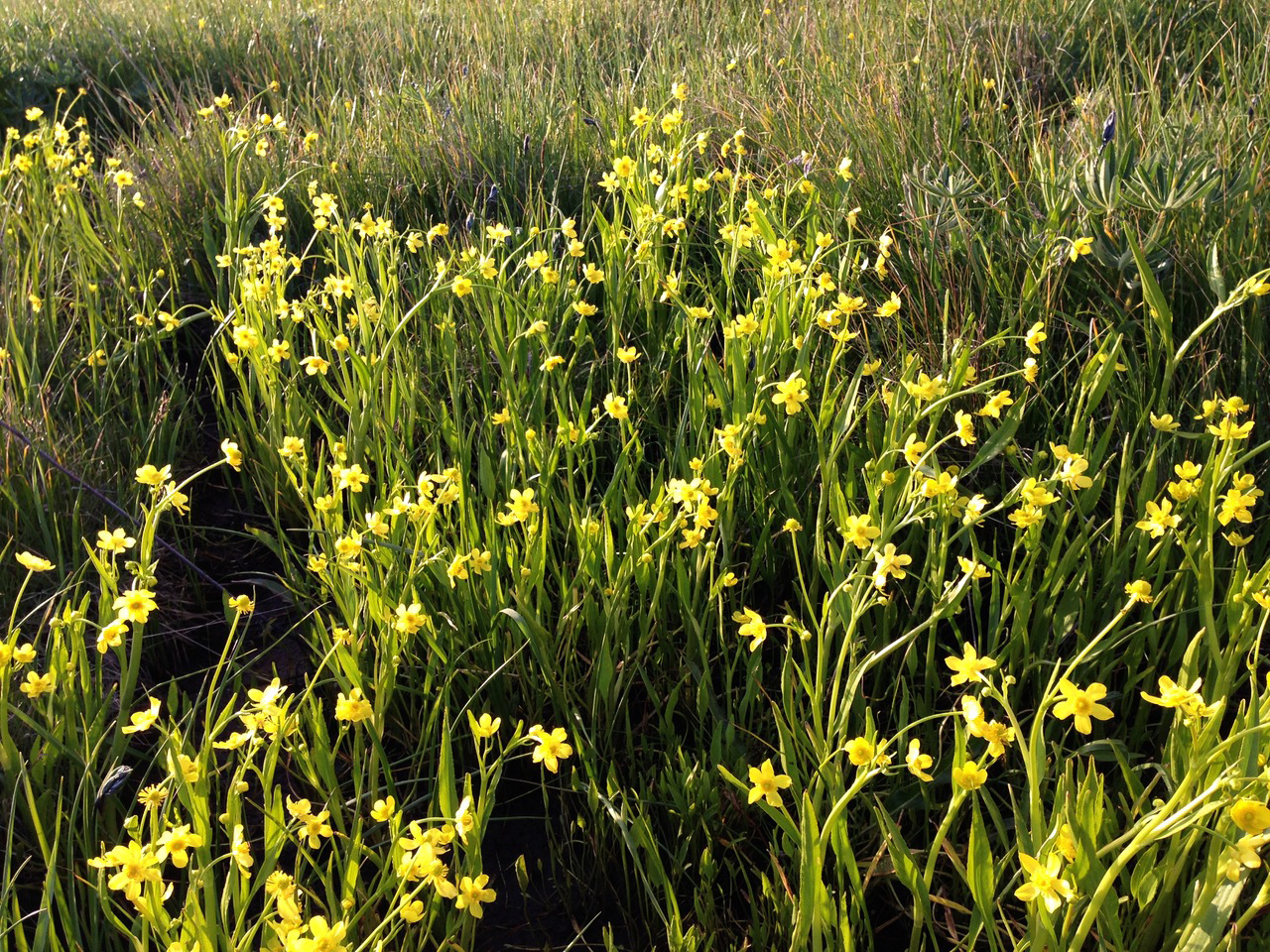
The Garry Oak Meadow Preservation Society (GOMPS), a volunteer-run charitable organization in Victoria, advocates for conservation of this ecosystem by engaging with different levels of governments. It also runs a nursery where volunteers collect acorns and supply seedlings to local restoration groups to reintroduce them to the urban landscape.
“[Garry oak] sits on the list of the species of trees in the region that are most adaptable to anticipated or projected climate change,” says arborist and urban forester Ryan Senechal of GOMPS. “This tree has a lot of potential as an urban tree.”
But these ecosystems also play an important role in carbon sequestration and lowering emissions. In a recently developed Forest Carbon Atlas, a repository of carbon stocks and greenhouse gas emissions at a national park level, the Garry oak ecosystem in Gulf Islands National Park Reserve stood out.
“Garry Oak ecosystems indeed store a lot of carbon per unit area,” says carbon ecologist Tara Sharma at Parks Canada, who led the development of the atlas. On average, she says, Garry oak ecosystems store 25-30% more carbon per area of land than the coastal Douglas fir ecosystems. The oak-prairie ecosystem on the Gulf Islands, which have younger trees, stores about 400 metric tons of carbon per hectare, and ecosystems with older trees store a lot more.
In the U.S., the Oak Harbor Garry Oak Society in Washington state has initiated the Sound Oaks Initiative. This is a citizen-science effort to build an interactive map of existing Garry oak ecosystems in Puget Sound, where 99% of its historical habitat has been destroyed. Partnering with volunteers, the society has planted Garry oak trees in many locations across Whidbey Island, and removed invasive plants in existing meadows. Similarly, the San Juan Preservation Trust has restored existing Garry oak meadows on Turtleback Mountain Preserve by cutting down firs and clearing invasive blackberries from the understory.

Challenges in restoration
Despite the passionate efforts of communities, restoring the heavily fragmented ecosystem comes with many challenges. For small volunteer-run groups, access to necessary resources is a persistent concern.
“The biggest challenge is we really need a proper plan for Uplands Park developed by a natural landscape architect, and that costs a lot of money,” Lidkea says. “We are just a volunteer group, we don’t have a lot of money.”
Managing invasive species involves dedicated and laborious work, year after year.
“That’s going to continue to be a tough one,” Pellatt says. “We might want to set our expectations about not so much getting rid of invasive species but keeping them managed so the native species can also thrive.” Although fire is a proven way to manage invasive species, getting community buy-in to set fires next to their backyard, where many small patches of Garry oak meadows still survive, is difficult.
Powered by the community’s passion and dedication, largely a result from years of outreach, they continue to push through the hurdles. “People don’t bother protecting what they don’t understand,” Gedalof says. “When people see them, they’ll know why they’re so special.”
Related reading:
First Nations have created a robust conservation economy in Great Bear Rainforest: Report
